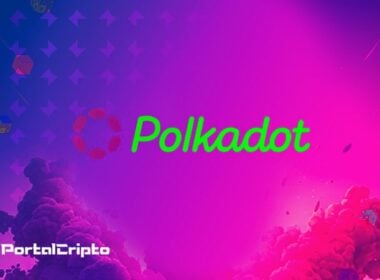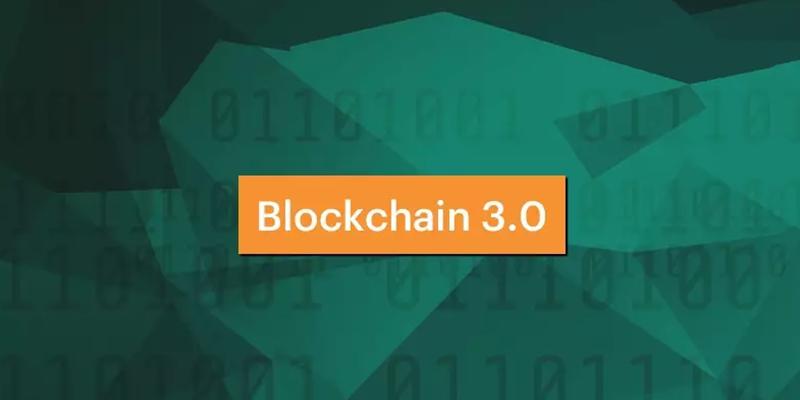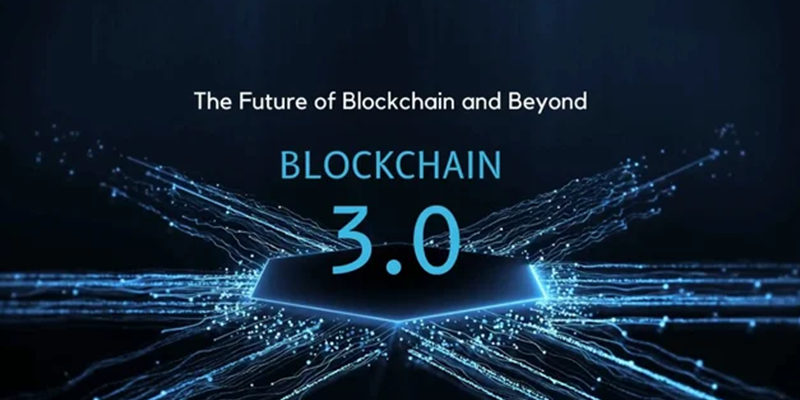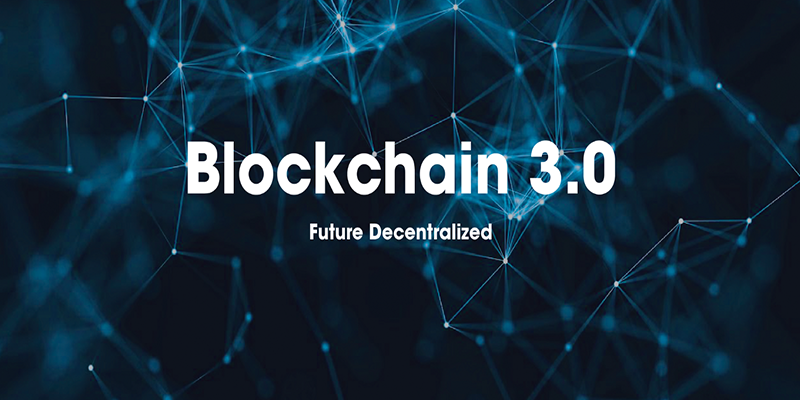Blockchain 3.0 is a general term that describes attempts to fix current problems in the blockchain industry specifically, issues related to scalability, interoperability and, many would argue, privacy. While blockchain 1.0 (think Bitcoin) and blockchain 2.0 (e.g. Ethereum) launched distributed ledger technology (DLT) into the public eye, blockchain 3.0 should be the final push needed to gain widespread adoption.
In this article, we will discuss:
Blockchain 3.0
Blockchain 1.0 came about with the launch of Bitcoin in 2009. It brings with it the potential technology to shift from the predominant use of centralized fiat currencies to decentralized digital currencies that are more transparent, efficient and secure. The aim is to process transactions and remove intermediaries such as central banks and their charges.
Despite Blockchain 1.0's new proof-of-work (PoW) approach, issues with transaction processing also emerged. With the need to solve highly complex mathematical problems before blocks of transactions can be processed, mining cryptocurrencies like Bitcoin requires a huge amount of electricity in high-powered computers. This makes the process not only highly unsustainable, but also unscalable. For example, Bitcoin can process 3-7 transactions per second, while Visa's transaction speed is around 2.000 TPS.
To overcome the limitations of Blockchain 1.0, Blockchain 2.0 was established, with Ethereum taking the lead in launching the proof-of-stake (PoS) protocol. Transaction processing has been automated, with smart contracts making it faster and more efficient, achieving around 15 transactions per second – double what Bitcoin can produce. However, this fee lags far behind what existing centralized payment institutions like Visa can do. Therefore, for the blockchain If it becomes a serious competitor to leading centralized payment institutions, Blockchain 3.0 is intended to overcome the biggest problem for existing blockchains: scalability.
What can Blockchain 3.0 do?
As an updated version of Blockchain 2.0, Blockchain 3.0 builds on and refines the technological capabilities of its predecessor. It uses a directed acyclic graph (DAG) as its data structure to facilitate a one-way flow of information that cannot be returned to the sender, thus eliminating block times. This allows transactions to be processed almost immediately – at an incredible rate of 10.000 transactions per second, beating companies like Visa.
With a faster, more cost-effective and efficient approach that can rival existing centralized financial institutions, the release of Blockchain 3.0 helps accelerate the adoption of blockchain technology. It does this not only in the financial sector, but also in many other sectors – from improving the security of storing and transferring information in healthcare and applying distributed ledger technology in the logistics sector, to improving the tracking of goods and even implementing Ledgers transparency in voting systems to increase accessibility and enhance security.
Blockchain 3.0 may not have achieved its goal of global adoption, but it has gone beyond the establishment of a decentralized financial protocol – its original motive – to improve the storage and transfer of sensitive data. This has greatly expanded the application of blockchain technology and distributed ledgers to all industries.
As the most disruptive technology of the century, blockchain will continue to iterate and evolve to improve its practicality and adoption. This requires ongoing research to resolve pain points and planning for implementation, as well as testing and experimentation for feasibility. This process will eventually lead to the arrival of Blockchain 4.0, as well as moving closer and closer to the decentralized world imagined with the advent of blockchain technology.
Blockchain 3.0 Scalability
Blockchain's current scalability issues are not a secret. In addition to an innately poor throughput (Bitcoin’s seven transactions per second versus Visa’s 2.000, for example), blockchains utilizing Proof of Work consensus face additional scaling bottlenecks due to the power needs of mining. Fortunately, there are many blockchain 3.0 solutions in the process of improving these scalability issues.
layer two
Most notably, several layer two fixes are being developed to integrate with existing blockchain protocols. These solutions effectively transfer transactions from a blockchain to a peer-to-peer network to reduce bloat and increase the throughput of a blockchain.
Numerous bitcoin transactions, for example, currently go through the relatively new layer two Lightning Network. And Ethereum is implementing a similar blockchain 3.0 solution called Plasma.
Consensus mechanisms
On the other hand, some companies are reinventing the wheel, so to speak, creating scalability-focused blockchains from scratch. For example, Zilliqa, a nascent smart contract platform, implements sharding and a unique consensus mechanism (Byzantine Fault Tolerance, or BFT) to provide substantially higher throughput than traditional blockchains.
Zilliqa is not alone, however. Countless emerging blockchains are testing new consensus mechanisms. Facebook's Libra utilizes a form of BFT, Ethereum is moving to Proof-of-Stake (PoS), and several others follow Proof-of-Stake (dPoS). Most blockchain 3.0 companies are simply trying to avoid proof-of-work pitfalls.
Directed Acyclic Charts (DAGs)
In fact, some projects are moving away from blockchains altogether. The foundation of IOTA and Nano, for example, is a Directed Acyclic Graphs (DAG), not a blockchain. Without going into too much detail, DAGs require you to confirm several other transactions when creating a transaction yourself. This allows DAGs to become more efficient as the network grows.
Hereda Hashgraph is another DAG project, led by IBM, Deutsche Telekom and Tata Communications, among many other industry giants. Hereda Hashgraph is another DAG project, led by IBM, Deutsche Telekom and Tata Communications, among many other industry giants.
Interoperability is also not limited to blockchain-to-blockchain communication. We also need to connect blockchains to traditional infrastructure. Companies like Chainlink are working to do just that, building an ecosystem of oracles that feed real-world data onto blockchain networks. Google, Oracle and SWIFT have already partnered with Chainlink to receive data from Oracle and more easily integrate blockchain networks into their systems. On the traditional financial side, Santander, Barclays and other large institutions are also creating their own interoperability standards.
Blockchain 3.0 Privacy
Most blockchains are inherently public, which means wallets and transactions are available to anyone who bothers to look. Even if privacy doesn't seem like an urgent issue to you, many organizations and individuals see the lack of it as a deciding factor when it comes to implementing blockchain technology.
Already, several cryptocurrencies have incorporated privacy into their protocols. Monero, Dash and Zcash contain various levels of anonymity at their core. There are even plans for Ethereum to implement zk-SNARKs, the privacy protocol behind Zcash, in the near future. But it's hard to argue that these cryptocurrencies are part of the blockchain 3.0 movement.
MimbleWimble appears to be leading the way in blockchain privacy 3.0 with Grin and Beam as two of its first implementations. MimbleWimble is a unique blockchain protocol that replaces addresses and a scripting language with blocks containing only inputs, outputs and signature data. This makes transactions more difficult to track and trace, as well as helping with the scalability of the blockchain. In addition to Grin and Beam, Bitcoin developers and Litecoin are also playing with MimbleWimble integrations.
From a smart contract point of view, we need to bring Aion and Wanchain back in again. Both platforms implement a privacy layer for their smart contract features, giving you the ability to control the information you share.
Building the new internet
IOTA
He developed a mesh network called “Tangle”, based on a Directed Acyclic Graph (DAG). The Tangle protocol uses parallel validation: a new transaction must be validated by two previous ones first. Each node doing transactions will participate in the mining required for consensus. The more people using IOTA, the faster the network becomes. IOTA offers infinite scalability, microtransactions and quantum resistance.
EOS
EOS provides open source software that allows scaling up and down of DApps. The blockchain architecture used improves scalability, eliminates user fees and allows for easy deployment of DApps. EOS provides inter-blockchain communication. Developers can access server hosting, download bandwidth and cloud storage.
NANO
Formerly called Raiblocks. Nano uses a block truss structure. Each user account has blockchain ledger balances, which are asynchronously updated to all blockchains on the network using a DAG. The platform offers fast transactions and infinite scalability. Uses minimal resources to run the platform. Nano has a fee-free transaction structure when purchasing with the currency.
ArcBlock
ArcBlock aims to remove the barriers that hold back mass blockchain adoption by building a scalable platform for Dapps. ArcBlock's platform follows a “top-down” strategy with a focus on user experience. ArcBlock combines blockchain technology with Cloud Computing. They use an Open Chain Access Protocol to allow interconnectivity between different blockchains. ArcBlock uses Blocklet for its serverless computing and microservices architecture.
Lightning Network
A decentralized second-tier payment protocol, operating on top of a blockchain. It uses smart contracts to enable high-volume, high-speed, secure microtransactions. It allows for instant payouts, scalability, low costs and cross-chain atomic swaps. This exchange is where two blockchains that support the same cryptographic hash function make transactions without third parties. Uses SegWit to protect against malleability of transactions.
Wanchain
Wanchain is a universal cross-chain protocol that records transactions between chains and intra-chains. They aim to rebuild the financial infrastructure, allowing isolated networks of banking services to connect to each other. Ring signatures provide anonymity for the sender of transactions. Unique addresses provide anonymity for recipients of transactions. Any Ethereum DApp will run on the Wanchain platform with enhanced privacy and cross-chain features.
Neblia
Neblio is building a network of business blockchain developers to offer easy-to-use APIs and tools for non-technical users. A decentralized P2P mesh network of nodes that facilitates the exchange of information through proprietary transaction modules. Relay locks the mesh nodes together. Each node contains a copy of the entire blockchain increasing the performance of DApps. The scalable framework processes transactions quickly.
Conclusion
Current technology cannot process the volume of microtransactions required for mass adoption around the world. To address this, Blockchain 3.0 is under development. There are several different approaches to overcoming scalability constraints. Examples include the Lightning Network, mesh networks, and block structure structures. The future of blockchain is a decentralized internet that combines data storage, smart contracts, cloud nodes and open chain networks. This article aims to present some Blockchain 3.0 development projects.














